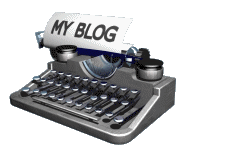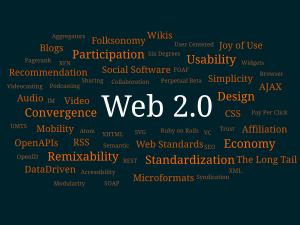
Week 10 was recap to know more about Differentiate between Web 1.0, 2.0 and 3.0
* Describe the basic technologies, applications and types of web sites that comprise Web 2.0
* In your opinion, how can Social networking help organizations achieve their competitive advantage? Why?
Web 1.0
Web 1.0 category sites basically contains information that user's might find useful, but there's no reason for a visitor to return to the site later. An example might be a personal Web page that gives information about the site's owner, but never changes. And visitors can only visit these sites, they can't contribute to these sites. Because of this, these kind of sites are Static and they are not Interactive to the visitor which will make the site a Passive, One-way and a Closed site.
Web 2.0
If you surf the Web design sites these days, you can't help but find references to Web 2.0. This is the new and revolutionary change that is sweeping the Web and allowing users to interact with the data available there in ways we never dreamed possible 10 years ago. But is this really the case? How much of Web 2.0 is just marketing hype and how much of it is actually new?
I think that the originally in 2004, Web 2.0 was referred to as this idea of the "Web as a platform". The concept was such that instead of thinking of the Web as a place where browsers viewed data through small windows on the readers' screens, the Web was actually the platform that allowed people to get things done. But this really didn't catch on. In fact, it's fairly hard to grasp what that really means.
Web 3.0
Web 3.0 is all of the above with web experience that is no longer limited to desktop and laptop computers. It’s the Internet on the go fueled by mobile phones and tablets. Websites must be designed to be easily read on mobile devices. Group text campaigns function like e-mail newsletters in Web 1.0 which will drive traffic to your mobile website. Smartphone Applications enable content to be published and shared easily while on the go.

That was the end of week 10 know more about these three webs.



